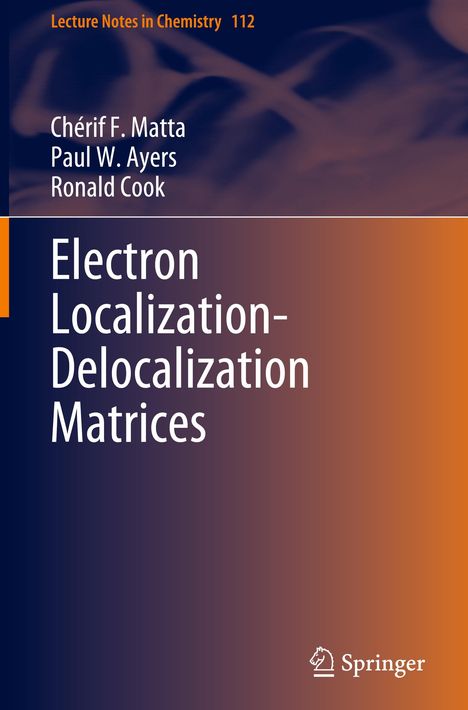Chérif F. Matta: Electron Localization-Delocalization Matrices, Gebunden
Electron Localization-Delocalization Matrices
Buch
lieferbar innerhalb 2-3 Wochen
(soweit verfügbar beim Lieferanten)
(soweit verfügbar beim Lieferanten)
Aktueller Preis: EUR 170,67
- Verlag:
- Springer International Publishing, 05/2024
- Einband:
- Gebunden, HC runder Rücken kaschiert
- Sprache:
- Englisch
- ISBN-13:
- 9783031514326
- Artikelnummer:
- 11857560
- Umfang:
- 244 Seiten
- Nummer der Auflage:
- 2024
- Ausgabe:
- 2024
- Gewicht:
- 580 g
- Maße:
- 241 x 160 mm
- Stärke:
- 18 mm
- Erscheinungstermin:
- 3.5.2024
- Hinweis
-
Achtung: Artikel ist nicht in deutscher Sprache!
Klappentext
This book builds bridges between two yet separated branches of theoretical and mathematical chemistry: Chemical Graph Theory and Electronic Structure Calculations. Although either of the fields have developed their own techniques, problems, methods, and favorite benchmark cases independent from each other, the authors have managed to bring them together by using the localization-delocalization matrix (LDM). The LDM is a novel molecular descriptor that fingerprints a molecule by condensing the complicated electronic information in one, mathematically manageable, object. In this book, the authors introduce the readers to modeling techniques based on LDMs. Their technique offers a high accuracy as well as robust predictive power, often dramatically surpassing the potential of either of the constituting methods on their own. In addition to the comprehensive and accessible introduction to this new field of theoretical chemistry, the authors offer their self-developed software free to download, so that readers can try running their own simulations. The described methods are very general and can easily be implemented for calculating various properties and parameters such as mosquito repelling activity, ionic liquid properties, local aromaticity of ring molecules, log P's, pKa's, LD50, corrosion inhibition activities, and Lewis acidities and basicities to only name a few. The free downloadable software helps readers automate the analysis of the matrices described in this book and hence facilitates application of the described methodology.Biografie (Chérif F. Matta)
Chérif F. Matta obtained his BSc from Alexandria University, Egypt, in 1987 and gained his PhD in theoretical chemistry from McMaster University, Hamilton, Canada in 2002. He was then a postdoctoral fellow at the University of Toronto, Canada, before being awarded an I. W. Killam Fellowship at Dalhousie University. Professor Matta has held the J. C. Polanyi Prize in Chemistry, two BioVision Next Fellowships, and a Chemistry Teaching Award, and has more than 40 papers and book chapters and two software programs to his credit. His research is in theoretical and computational chemistry with a focus on QTAIM and its applications.
Chérif F. Matta, Ronald Cook, Paul W. Ayers
Electron Localization-Delocalization Matrices
Aktueller Preis: EUR 170,67

